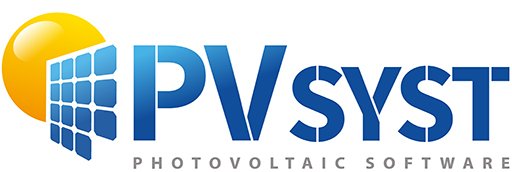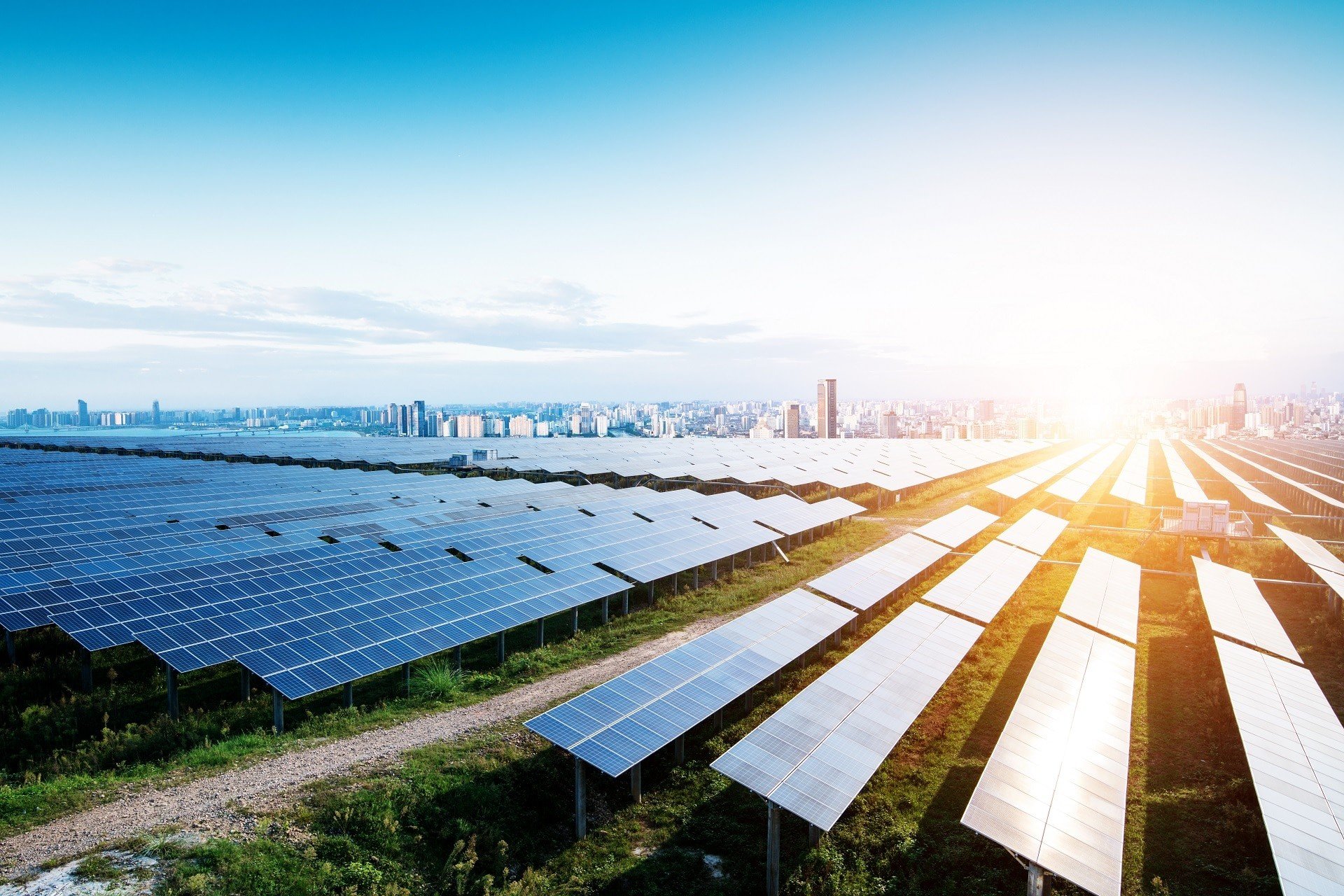-
Posts
2069 -
Joined
-
Last visited
Everything posted by André Mermoud
-
In the main menu "Files", you have several options: - Export whole projects, ensures that all files involved in the project are well taken into account, - Import whole projects, which dispatches the files in the suited folders. - Import and Export Database elements, which will position the components files in their corresponding directories.
-
For the versions 5.xx Since version 5.2, depends on your Windows OS: - Under Vista and Windows 7: c: \ ProgramData \ PVsyst \ Data \ - Under XP and olders: c: \ Documents and Settings \ All Users \ Application Data \ PVsyst \ Data \ Now you can also have yourself delocalized the data structure anywhere else (i.e. created directory "PVsyst_Data"). The directories actually in use are listed in the dialog "Files" / "Directories" It is possible that you don't see the c:\ProgramData\ directory: see "I don't see a folder "\ProgramData\" on my machine". It is also possible that you don't find your data in the c:\ProgramData\PVsyst\Data\ directory: please see "I don't find my files in the \Data\ structure". For the versions 6.xx The data structure is normally in c:\Users\"yourSession"\PVsyst6_Data\ If you have displaced them the actual path in mentioned in the main menu of the software: "Files" / "Workspace", User workspace ... You will find a complete description of the Database structure and localization in the Help: "Technical aspects > File organisation > User data > Projects and PV components".
-
Under Windows Vista or Win7, this folder is always present. But it may be "Hidden". For seing the hidden files or directories in your Windows File Explorer, please: - Open "Windows File Explorer" with the administrator rights (i.e. right-click the icon and choose "Run as an administrator"), - In the menu of the explorer "Organize" / "Options of folders and research" / "Display", choose "Display the hidden Files and Folders". Under Windows XP, the equivalent location (where \admin\ and \data\ directories are stored) is c: \ Documents and Settings \ All Users \ Application Data \ PVsyst \ Data \
-
The files you have created or modified are normally stored in the following folders: - Under Vista and Windows 7: c: \ ProgramData \PVsyst \ Data \ - Under XP and olders: c: \ Documents and Settings \ All Users \ Application Data \ PVsyst \ Data \ Now with Vista and Win7, if you don't have Windows rights for writing in these areas from your user session: when the program attempts to write on this area, Windows delocalizes these files and places all files written by the program in the special location: c:\ Users \ User \ AppData \ Local \ Virtual Store \ ProgramData \ PVsyst5 \ Data The files in \Virtual Store\ are treated by the program as if they were located in the PVsyst folders. NB: This is not a comfortable situation. You should obtain Windows writing rights for this folder.
-
You should obtain the Windows writing rights on the working folders of PVsyst, i.e. - c: \ ProgramData \ PVsyst \ Admin \ - c: \ ProgramData \ PVsyst \ Data \ For making these folders writable: - open the Windows file explorer by right-clicking the icon and choose "Run as an administrator". - Right-click the folder \Admin\, choose "Properties" / "Security", and here you can manage the writing rights on this folder for your session. - Do the same with the \Data\ folder, and everything should be ready for using PVsyst. If you don't see the folder c:\ProgramData\PVsyst\ , this is a hidden folder. If you don't succeed, on very well protected machines, you have to ask your IT specialist for doing this. NB: Under XP, you should do this from a User session beneficiating of Administrator rights.
-
When clicking the button "Report", I obtain the following message in French: "Aucune imprimante sélectionnée". Sorry, this sometimes arises even if you have correctly installed printers (it is a Windows problem), and I don't know why. You can try to download the free tool PDFCreator (to be installed as a printer): http://www.pdfforge.org/products/pdfcreator and select it as default printer. To my knowing this works in any case. And after that every printer may again be recognized as default printer. Mysteries of Windows...
-

I cannot use Acrobat for creating PDF
André Mermoud posted a topic in Installation and use of PVsyst
Normally for creating a PDF document you have an option in your printer list, managed by Adobe Reader. However sometime the Adobe PDF tool doesnt work, and I don't know why (probably an internal security parameter not understood by PVsyst). You can download the free tool PDFCreator (to be installed as a printer): http://www.pdfforge.org/products/pdfcreator To my knowing this works in any case. -
When defining and exiting a 3D shading scene, PVsyst checks that it is compatible with the rest of your system. In your case: - You have not yet defined the system (modules and inverters) - In the "Orientation" part you should define a tilt of 22° and an azimuth of around -26° NB: when developing a new system (calculation version) in PVsyst, you are advised to always begin by a basic system, and then add the complications step by step. The definition of the 3D scene is a secondary step, it should be done after the definition of the "Orientation" and the "System" parts.
-
Nothing has been changed in the model at this level (except perhaps for amorphous modules with very high Voc). But probably the parameters of the module you are using have been updated (on request of the manufacturer).
-
Taking the flash-test uncertainty into account in this parameter would be equivalent to a "Worst case" choice. By respect to the factory flash-tests, you can also take the eventual LID losses into account. Please see my comments on How to define the "Module Quality loss" parameter in the FAQ
-
This arises sometimes and we don't understand exactly why. This is related to the font size you are using in your Windows installation. Choosing "Small fonts" should in principle solve the problem. But not in any case. If so, please contact us.
-
This is not possible in PVsyst. The Horizontal global and diffuse components are computed by a retro-transposition, in order that the recalculation of the POA value will be the same as specified. Now I don't have an explicit model for performing the retro-transposition from a diffuse component measured in the collector plane. This is a non-standard problem, which would require some modelling work. I can't envisage such a development until several months, but I pout it on my to-do list.
-
Thank you for pointing this problem out. I will correct it in the next version 5.60.
-
You have probably a time shift of more than 30 minutes (one hour or more). Please observe your data by respect to the "Clear Day" model, using "Meteo tables and Graphs" / "Graphs" in hourly values". The different ways of correctin this are listed in My transposed POA data don't match the imported values.
-
When you open PVsyst, the first item of the menu (at the left) is named "Files" (or "Fichier" or "Dateien" or "archivos" in other languages).
-
You manage the favorites in the database lists: "Tools" / "PVModules" (or "Inverters", or ...). For selecting a favorite, you right-click it (and the line becomes green). For suppressing a favorite you also right-click it (from the "All components" list). It is not possible to suppress it from the favorite list, I have to think about this for a next version.
-

How to easily apply swinging door algoritm to a dataset?
André Mermoud replied to crazydata's topic in How-to
I don't know what is exactly a swiging door algorithm. But the meteo data imported in PVsyst (*.MET files) are in hourly values and extremely compact. Usual files have less that 75 kB. -

*h2p-file import for southern hemisphere
André Mermoud replied to DanielE's topic in Problems / Bugs
This depends on which version of PVsyst you are using. The angle definitions of Helios3D for southern hemisphere are a little bit strange and not usual. I have updated the program PVsyst for the version 5.58, using specific file samples provided by Helios3D. Please send me your files if they don't work well with the latest version of PVsyst. -
This is a safety condition: the inverter maximum input voltage should never be overcome: this could damage the input electronics. Now Voc voltage of a PV array depends on the temperature: the practice is to take here the lower ambient temperature ever observed on the site. In middle regions of Europe the usual practice is to take -10°C (except in mountains where it should be lower). In the USA, people uses to takes the minimum observed during last 30 years. You can define this temperature in the Project dialog: - in the version 5: button "Site and Meteo > Next". - in the version 6: button "Albedo and settings" If you really want to overcome this limit (at your own risk), you have to change the VmaxAbs value in the inverter's definition (and sometimes also the limit for the PV module).
-
In PVsyst the orientation conventions are (contrary to Architect's conventions): - For Northern hemisphere, the Azimuth = 0° corresponds to the South. The azimuth is positive towards west (clockwise angles). Therefore: East = -90°, West = +90°, North = + or -180° - For Southern hemisphere, the Azimuth = 0° corresponds to the North. The azimuth is positive towards west (anti-clockwise angles). Therefore: East = -90°, West = +90°, South = + or -180° These configurations are explicit on the little graphs when defining the plane orientation. Note about red dots: The red dots have no "physical" meaning (it is not the same point on both diagrams) ! By convention in PVsyst the red dot is always a dot that you can drag with the mouse. For example in the Orientation graphs, on the left diagram it commands the tilt, and on the right diagram it commands the orientation.
-

Near Shadings > Compute Shading Factor crashes the program
André Mermoud replied to bheilig's topic in Problems / Bugs
In the 3D tool, the sheds should not be defined for each module. These are generic surfaces ("tables") for receiving sets of modules, and should be defined as big as possible for avoiding too high calculation time. Please see With my big power plant, the calculation time is prohibitive in the FAQ. -
The Meteonorm program (V7.1, fully included in PVsyst V6) holds measured meteo data for about 1'500 sites in the world, named "Stations" (10-30 years monthly averages, in the range 1980-2010). But it allows also to get meteo data for any location on the earth, either by interpolation (between the 3 nearest stations), or on the basis of satellite data when no sufficiently near site is available. The "native" database present in PVsyst is based on these 1'500 Meteonorm measuring "stations". However in the PVsyst "Databases > Geographical sites" option, you can choose any location on a google map (or simply by specifying the coordinates), and get meteo data for this location either from Meteonorm or from the NASA-SSE database. Please see the post below for the procedure. Therefore even if you don't see your country in the database list, it will be present after you will have defined a site for your location. Now you have tools in the software for easily importing data from many well-known irradiation databases: Meteonorm (whole earth), Satellight (Europe), PVGIS (Europe and Africa), Nasa-SSE (whole earth), Soda-Helioclim, Retscreen, NREL TMY3 or SolarAnywhere(SUNY) in the US, EPW in Canada, NREL(TMY3) for India, etc. For this, please open "Databases" / "Import Meteo Data", choose the source, and press F1 for more details in the Help, a description of each source and the procedure for importing them. If you can obtain climate data from your Meteorological Service, of if you have your own measured data, you have also a general tool for importing data from almost any ASCII (text) file. Now there are several companies which distribute Satellite recent data for anywhere on the earth: e.g. SolarGIS, Helioclim-SoDa, 3Tiers, Vortex . They avail of recent data in hourly values, but this is for pay. You can also import these data readily into PVsyst using "Databases" / "Import Meteo data". NB: when you have Meteo data in Monthly values, you have to generate a synthetic hourly file for using them in the simulation.
-
You have tools in the software for easily importing data from many irradiation databases: - 3TIER-Vaisala (recent satellite data for the whole world, for pay), - ASHRAE IWEC2 (hourly TMY, whole world), - Canada EPW (Hourly TMY) for Canada, - Explorador Solar (Chile), - Meteonorm (whole world), - NASA-SSE: monthly data for the whole world, by cells of 1°x 1° lat/longitude (110 km), - NREL TMY for the USA and for India, - PVGIS (Europe, with also a new database of recent data, and Africa), - Retscreen (canadian program, montly values), - ReuniWatt (recent satellite data for the whole world, for pay), - Satellight (Hourly values for any pixel of 5 x 7 km2 in Europe), - Soda-Helioclim (monthly and Hourly values for Europe), - SolarAnywhere : recent satellite hourly data for the USA and Hawaïï - SolarGIS: recent satellite data for the whole world, for pay. - VortexSolar: recent satellite data for the whole world, for pay. For this, please open "Databases" / "Import Meteo Data", and press F1 for more details, a description of each source and the procedure for importing them. If you can obtain climate data from your Meteorological Service, of your own measurements, you have also a general tool for importing data from almost any ASCII file.
-
In PVsyst, we have taken the convention to label all data which don't correspond to measured data at a given time as 1990. This is the case, namely, of all Synthetic hourly data, or TMY/DRY datafiles (assemblies of periods of different years). In most results (tables/graphs) the references labels will appear without year reference (generic year). The meteonorm data present in the software for any location on the earth are averaged value (over 10 years or more). When using them the software will tell you the years range of these particular data, depending on the region, usually between 1990 and 2010. The NASA-SSE data of PVsyst are averages of 1983 to 2005 years. Now if you want to perform simulations for one or several "real" years, you have to get the data of each of these years of course (from another source). NB: PVsyst is only able to treat data of one year at a time. Several years will give rise to several *.MET files, and several simulation runs.
-
No. PVsyst is only able to treat data of at most one year at a time. Several years will give rise to several meteo files (*.MET files), and therefore several Simulation runs. After performing these simulations you can average the results if you want. Please note that the TMY2/3 databases don't provide 30 years of data, as often believed.

